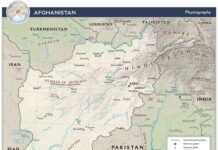 Context
Context
When all seemed set and done and all that was pending was the signing of the agreement, the Afghan peace talks suddenly collapsed with a dramatic announcement from President Trump on September 7th. The debate about the cause of this sudden change of heart started in earnest. Was the deal too lopsided in favor of Taliban, or was it the continued violence despite progress in peace talks that led to the sudden termination? Perhaps it was the intense lobbying from India that resulted in this outcome.
Then there are questions regarding if the talks are completely dead, or just paused for now. And if they are temporarily suspended, what conditions can restart the negotiations again? Alarmingly, none of this is clear. However, there remains a possibility that US may unilaterally pull out of Afghanistan, but what circumstances can cause this?
Irrespective, the negotiations have signaled tremendous progress and many myths regarding what is possible were shattered. Moreover, as previously noted by PoliTact, the Afghan conflict at this point is more about what it represents for the regional and global balance of power. With such high stakes, peace in Afghanistan will not become a reality without clear winners and losers.
Analysis
Intra-Afghan Dialogue and Ceasefire
While Afghan Taliban and the Americans have also negotiated in the past, they have been short lived and issue specific. The present engagement was the broadest carried out by Special Representative Zalmay Khalilzad, spanning over nine rounds. These talks were initiated despite tremendous opposition; from within and outside, on if US should deal directly with the Afghan Taliban. And, the question of if Afghan Taliban can be trusted has emerged frequently.
The main differences that have bedeviled the dialogue had to do with Afghan Taliban cutting off ties with Al Qaeda and entering into talks with the Afghan government. On the other side, Taliban have rejected the demand of engaging the Afghan government before reaching a broader deal with the US. This framework entailed a timeline for the withdrawal of foreign troops, with the caveat that some forces would stay to continue the counter-terrorism operations. The bone of contention remained the shape of future Afghan government and the timing of the ceasefire.
Nonetheless, the talks with the Afghan Taliban have demonstrated that they are reconcilable – in contrast to the likes of Al Qaeda and Daesh, the later being a growing threat in Afghanistan. Meaning Taliban seemed willing to break ties with what is left of Al Qaeda, and work on preventing Afghanistan being used as a safe haven against any other country.
American Interests In Afghanistan
Just two days before Trump broke off the talks, the Middle East Institute in Washington DC hosted an event on September 5th, titled ‘Assessing the Implications of a US-Taliban Deal’. Those against any agreement with the Taliban pointed out they cannot be trusted, and that Afghanistan was not secure enough to prevent another 9/11 type attack. Questions were also raised regarding the American interests in Afghanistan, and if they have been achieved. Surprisingly, the speakers stayed away from any blame game related to Pakistan, and any mention of India, especially in the context of what has transpired in Kashmir. But, there was a greater recognition of the regional and global implications of any deal, where Russia, China, and Iran are taking much more interest.
For the most part, US has been able to moderate Al Qaeda in Afghanistan and its top leadership has mostly been eliminated, but the threat still lurks in the dark. And if Afghan Taliban cut ties with Al Qaeda and allows for the counter-terrorism operations, then the bulk of the American stated demands appear to be have been met.
Why The Talks Broke Down?
However, if one inculcates the interests of India and the larger strategic picture – the matters become more complex. Moreover, there are concerns related to the sustainability of what has been invested in Afghanistan up to this point – and this leads to the question of Intra-Afghan dialogue and the future of present Afghan government.
For all intents and purposes, if the Afghan Taliban and the US had reached an agreement in its present form, the Intra-Afghan talks would have constituted the second phase of peace talks. When and if these talks would have taken place, they are likely to have been much tougher and would have probably bogged down, considering the Afghan history.
Moreover, if the agreement had been reached in its reported current shape, the phased withdrawal of foreign troops would have been initiated. However, this would have also de-incentivize the Taliban from making progress in bargaining with the Afghan government. All what Taliban would have had to do, would have been to drag the talks out. And with no ceasefire at this stage, the Taliban may have militarily overthrown the Afghan government, as foreign troops withdrew.
So, from the American perspective, the consideration becomes to provide the right context for Intra-Afghan talks to succeed, and this may mean strengthening the hand of Afghan government rather than weakening it, which the present format is perceived to have done.
What’s Next?
While the talks may have faltered for right now, they presented a unique opportunity to understand the Taliban interests and thinking, and these insights would be invaluable to plan the next stage.
Though the contradictions remain, one cannot strengthen the Afghan government and reach a deal with the Taliban at the same time – because it convolutes the comprehension of how the parties involved reached the negotiation table in the first place.
Strengthening the Afghan government has not worked in producing the desired results in the past. And, this leads to the question of a unilateral withdrawal, which would not be popular amongst the regional and global stakeholders. However, the strategic assessment would then become: does the US considers its withdrawal from Afghanistan, or even a limited presence, beneficial or detrimental for the regional and global stakeholders, especially for those that pose more of a competitor role.



